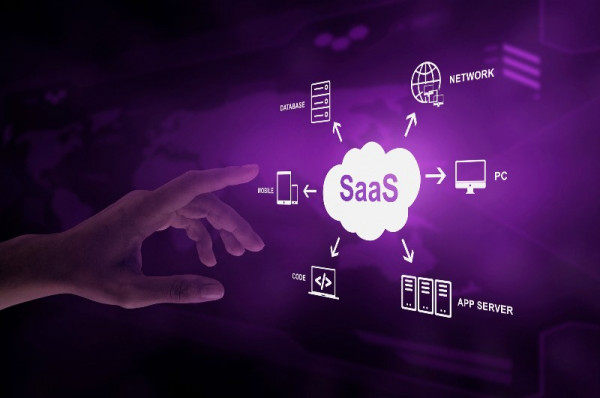Data analytics is critical to balancing security and progress by implementing measures to protect data while deriving valuable insights and driving innovation. It enables organizations to analyze vast amounts of data and extract meaningful information to enhance decision-making and optimize processes. Simultaneously, data and analytics service providers prioritize data security by implementing robust measures such as encryption, access controls, and risk assessment.
Organizations can mitigate the risk of data breaches and unauthorized access by ensuring data confidentiality, integrity, and availability. This balance between security and progress enables organizations to leverage the power of data analytics to unlock insights, drive innovation, and achieve their business objectives while safeguarding sensitive information.
The projected size of the global Big Data Security Market is expected to reach USD 35.3 Billion by 2026, with a compound annual growth rate (CAGR) of 12.4% during the forecast period. The market’s expansion can be attributed to the growing awareness and increased investments in big data security solutions by organizations worldwide across various industries.
Here are several ways in which data analytics achieves this balance.
Object-Level Security
This is a vital aspect of data analytics that organizations employ to protect sensitive data. Organizations can prevent unauthorized access and manipulation by implementing granular access controls at the object level and defining user privileges based on roles. This security measure reduces the risk of data breaches, enhances compliance efforts, and supports self-service analytics environments. Object-level security enables organizations to align data access with regulatory requirements, maintain audit trails, and ensure the principle of least privilege. This approach allows organizations to balance enabling data access for analysis with maintaining robust data security, promoting progress while safeguarding sensitive information.
Risk Assessment and Mitigation
Data and analytics service providers help organizations identify and assess potential security risks. Organizations can proactively identify vulnerabilities and prioritize risk mitigation by analyzing historical data, patterns, and trends. This enables them to allocate resources effectively, implement necessary security measures, and reduce the likelihood of security incidents or breaches.
Consistent Access Interfaces
Organizations can offer consistent access interfaces to employees with varying security classifications to balance security and progress. This ensures that employees can access the necessary data while adhering to their specific security clearance levels. Organizations can streamline the data access process by standardizing access interfaces and reducing potential security vulnerabilities or breaches.
Access Controls and User Permissions
Effective access controls are essential for data security. Data and analytics service providers ensure that appropriate access controls and user permissions are in place to protect sensitive information. By implementing role-based access controls (RBAC) and fine-grained access policies, organizations can restrict data access to authorized individuals and limit the risk of unauthorized data exposure or misuse.
Data Masking and Encryption
Data masking and encryption techniques protect sensitive data during analysis and processing. Data masking replaces sensitive data with fictional or obfuscated values, ensuring that real data is not exposed to unauthorized individuals. Encryption techniques are applied to data at rest and in transit, ensuring it remains unintelligible and protected even if it is intercepted.
Data Normalization
Maintaining data integrity, consistency, and accuracy is essential, and one way to achieve this is by normalizing data within a common framework. Data normalization involves structuring and organizing data in a standardized format, facilitating easier analysis and extracting valuable insights. Organizations can ensure that their analytics processes are based on reliable and accurate information through the normalization process, enabling more effective decision-making. Simultaneously, data normalization contributes to data security by preserving the integrity of the analyzed information.
Continuous Monitoring and Auditing
Data and analytics service providers continuously monitor and audit data access and usage. Organizations can track and monitor data activities, detect anomalies, and investigate suspicious events by implementing robust logging and audit trail mechanisms. This provides transparency, accountability, and the ability to identify and respond to security incidents promptly.
Proactive Threat Detection
Organizations can utilize security analytics tools to gather and analyze data from diverse sources, enabling them to detect and address threats proactively. These tools leverage network traffic, user behavior, cloud resources, and external threat intelligence to identify unusual patterns and potential security breaches in real-time. By taking a proactive approach, organizations can swiftly mitigate risks and prevent potential security incidents from occurring.
Compliance and Forensics
Security analytics assists organizations in maintaining regulatory compliance by monitoring and analyzing data to identify potential violations. Organizations can demonstrate adherence to relevant regulations and standards by correlating data from various sources and applying analytics techniques. Moreover, security analytics enhances forensic capabilities, empowering organizations to investigate security incidents, determine their underlying causes, and implement necessary measures to prevent similar incidents.
Collaboration and Information Sharing
Data analytics facilitates collaboration and information sharing among security professionals and relevant stakeholders. By leveraging analytics platforms and sharing threat intelligence, organizations can collectively respond to emerging security challenges, share insights on new attack vectors, and develop effective security strategies. Collaboration enhances the overall security ecosystem and enables collective defense against evolving threats.
Balancing Usability and Security
Data and analytics service providers also tackle the challenge of balancing usability and security. Technologies such as biometric authentication, selfie security, and IoT play vital roles in enhancing security, but their implementation must prioritize privacy and data protection. For instance, while biometrics offer convenience and security advantages, establishing regulations is necessary to safeguard individuals’ data against potential misuse by private entities. Similarly, utilizing IoT devices brings numerous benefits, but it is crucial to address security risks by implementing encryption and software tools to protect personal data. Furthermore, SIEM systems are indispensable for detecting and preventing attacks, but they may encounter difficulties in analyzing unstructured data, necessitating regular reviews and configuration adjustments.
Conclusion
Organizations can balance data analytics, security, and progress by implementing these practices. They can harness the power of analytics to drive innovation, optimize resource allocation, improve efficiency, and reduce fraud and abuse while safeguarding data and maintaining privacy and compliance.
STL Digital aids organizations in striking a balance between privacy and progress within the realm of data analytics. By implementing robust privacy-preserving measures, STL Digtal ensures that valuable insights can be derived from data while safeguarding sensitive information and promoting responsible and ethical data practices.
FAQs
- How can data analytics security measures protect sensitive data while enabling organizations to derive valuable insights?
Data analytics security measures protect sensitive data while enabling valuable insights by implementing access controls, encryption, and data masking. These measures ensure authorized access, reduce data breach risks, and safeguard confidentiality and integrity, allowing organizations to leverage data analytics while maintaining privacy and security.
- What role does data encryption play in ensuring the security and growth of organizations using data analytics?
Data encryption ensures security and growth in organizations using data analytics by transforming data into unreadable formats, preventing unauthorized access. Encryption safeguards confidentiality and integrity at rest, in transit, and during analysis, bolstering regulatory compliance, customer trust, and responsible data usage.
- What impact do data analytics security measures have on building trust with customers and stakeholders?
Data analytics security measures build trust with customers and stakeholders by demonstrating a commitment to protecting sensitive information. Ensuring data confidentiality, integrity, and availability establishes credibility, mitigates data breach risks, and promotes responsible data handling, fostering strong relationships, a strong reputation, and business opportunities.
- What are some best practices for implementing data analytics security measures to foster the growth and success of organizations?
Implementing data analytics security measures to foster growth and success involves conducting risk assessments, robust access controls, encryption, monitoring, data anonymization, clear policies, employee training, collaboration with IT and security teams, staying updated on threats, and compliance with regulations and standards.



